HOME AND GARDEN
Photos: So you want to be a beekeeper
Peter G Sullivan
Post Crescent
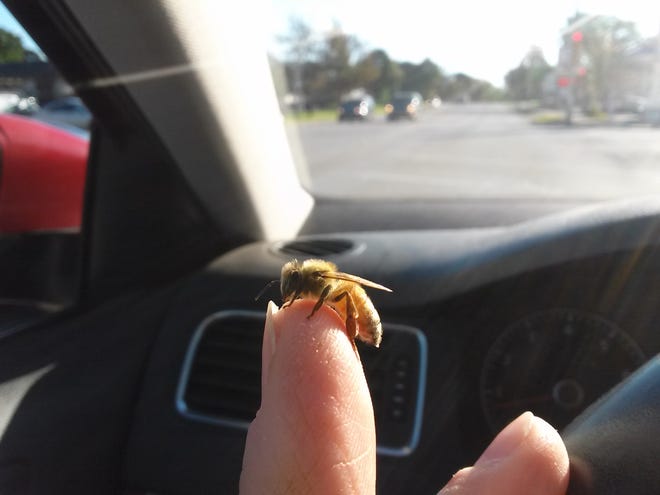
If you're going to keep bees, you need to be comfortable with them. This bee hitched a ride home with the beekeeper after she checked her hives last fall. She planned to return the bee to the hive, but the bee flew off when the door was opened. (Bees aren't aggressive away from the hive, so there were no worries about getting stung.) Read the story
Gemma Tarlach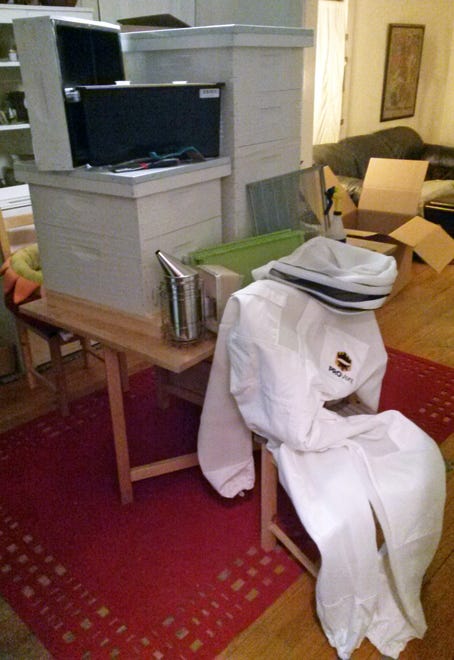
Beekeeping requires no small investment. The gear you need for just one hive will cost about $700.
Gemma Tarlach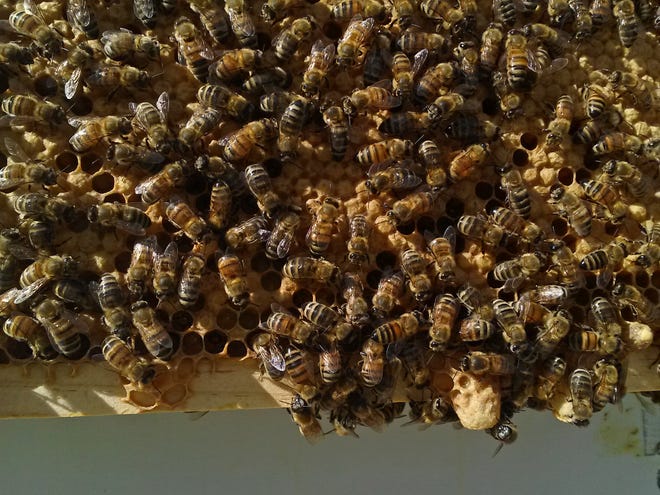
There are various kinds of bees available for keeping. These are Saskatraz bees, a newer, pest-resistant strain with a noticeably dark color.
Gemma Tarlach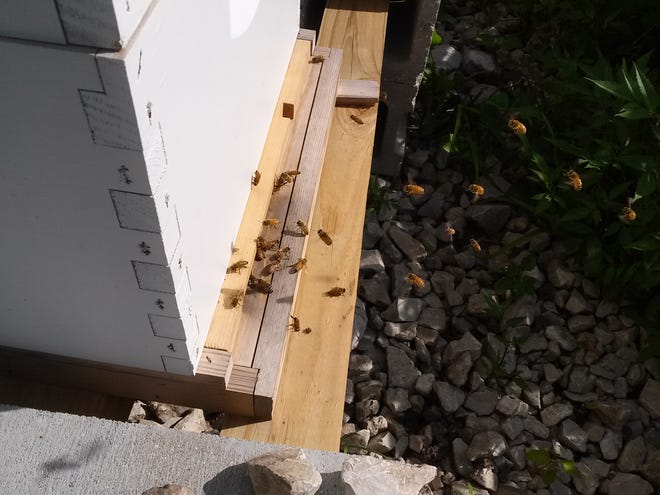
A typical summer shot shows bee traffic in and out of a hive.
Gemma Tarlach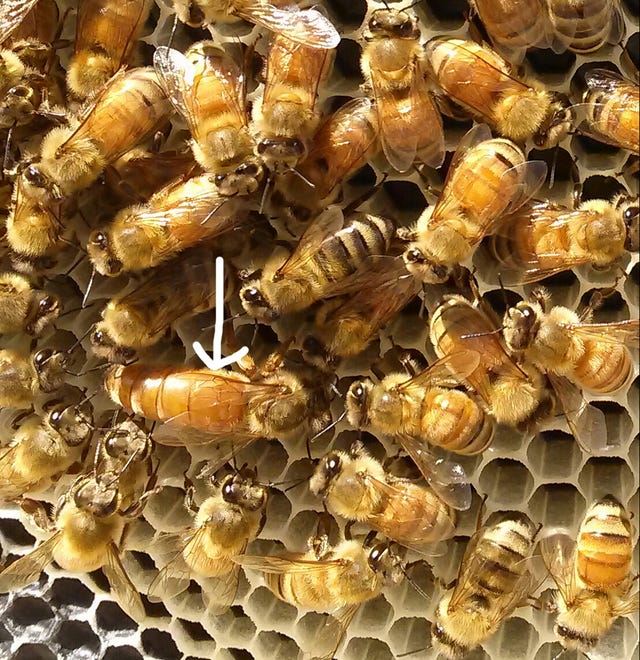
But peace doesn't always preside. For instance, there can be a swarm when space gets tight. In this case, Queen Butterscotch (center) took half the bees in one hive to form another. She is recognizable by her long, tapered abdomen, which makes her nearly twice as big as the workers around her. The bees that were left behind had to "re-queen.
Gemma Tarlach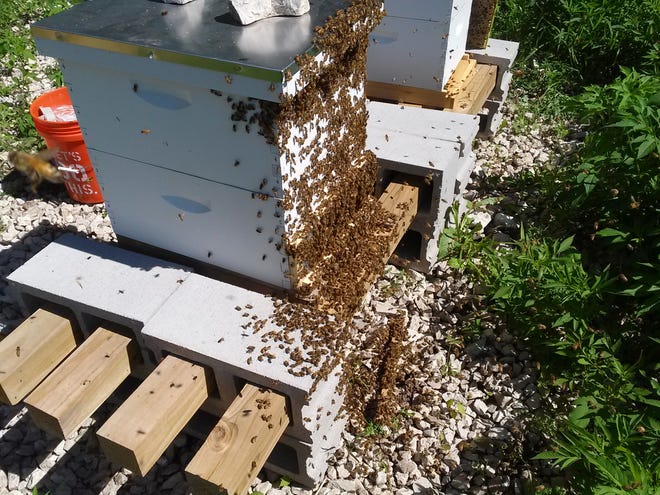
A couple of days after one hive swarmed, beekeeper Gemma Tarlach put a "robber screen" on this hive when bees began to leave en masse again: a secondary swarm. After about an hour, she took off the screen; by then, the bees had calmed down and re-entered the hive.
Gemma Tarlach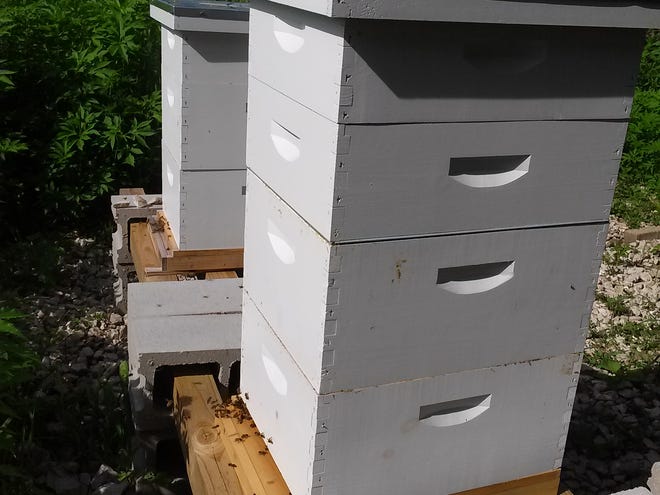
This photo was taken after the swarm. Beekeeper Gemma Tarlach left Hive 2, on the left, alone because this was the delicate period of re-queening and if the bees are disturbed, they may blame the new queen and kill her (bees don't mess around). Hive 1, on the right, was growing and needed more space, so she added a couple of "honey super" boxes (on top of the two deeper brood boxes) to give them more space and also encourage them to stop thinking about swarming and instead spend their time making honey.
Gemma Tarlach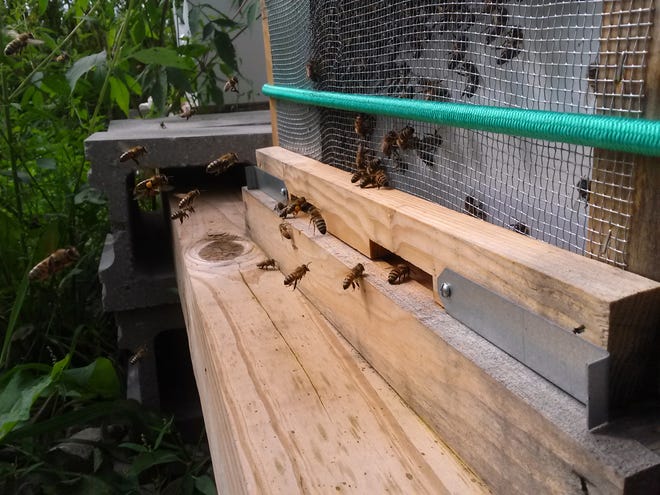
In another surprising development, another hive attacked Hive 1 in an effort to steal honey. These "robber bees" slaughtered many of the hive's bees in the process. It was another call for a "robber screen," which the beekeeper put on during the carnage. The foragers learned how to get in and out of the hive, but the robbers couldn't.
Gemma Tarlach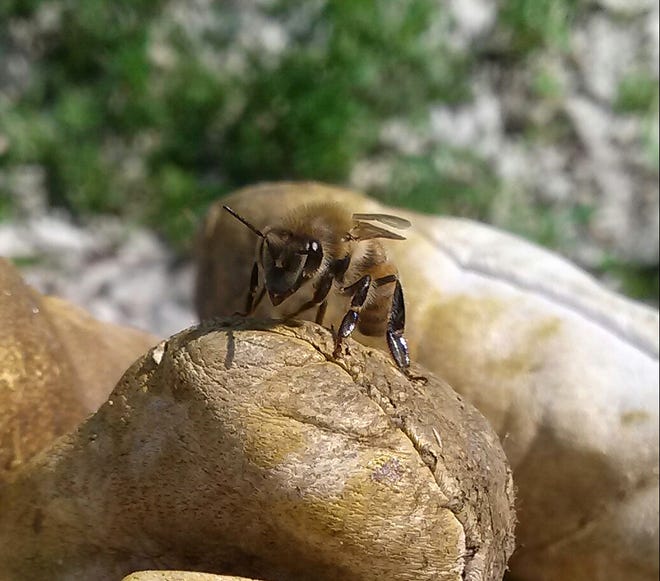
But most of the time bees are doing their job - pollinating. You can tell this bee is a baby because she's so fuzzy. Bees literally work their hair off as they age in summer.
Gemma Tarlach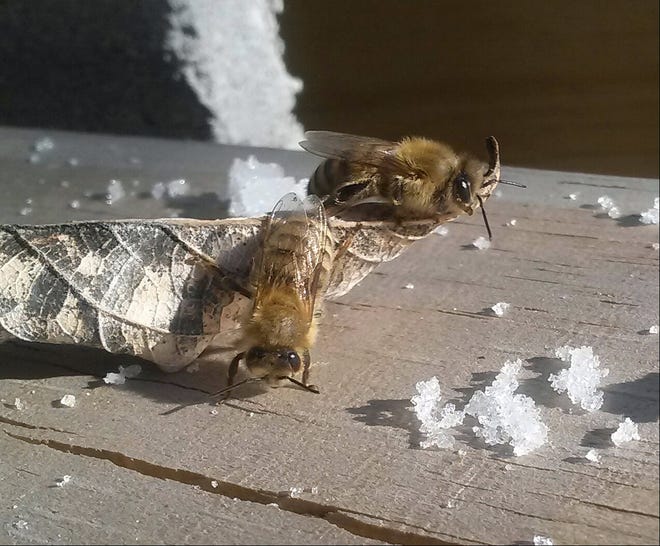
Winter doesn't always stop them - these bees were out and about in the December sun. Those are crumbs of sugar, not ice, around them. A sugar brick broke as it was placed in the hive, and they were "helping clean up.
Gemma Tarlach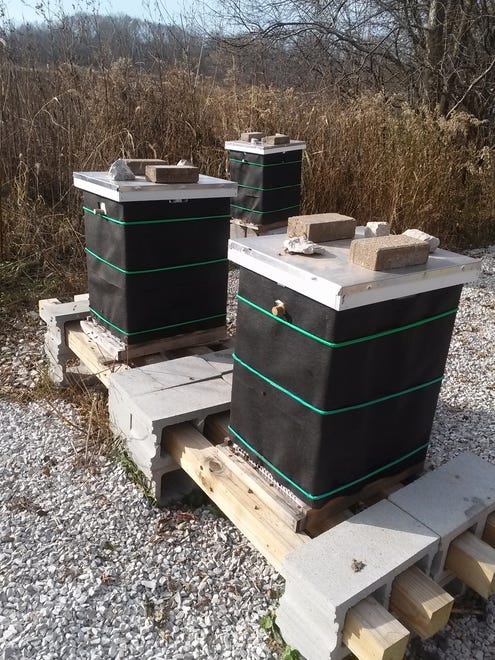
This is how hives look when winterized, wrapped in roofing felt (tar paper), with a quilting box and shim for winter feeding added atop the two brood boxes, plus a mouse guard at the entrance.
Gemma Tarlach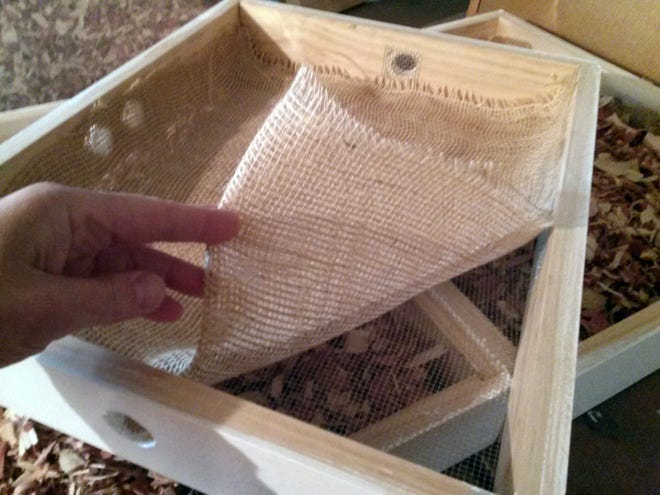
"Quilting boxes" with burlap, cedar chips and screened holes improve ventilation in the hive and reduce condensation in winter. Beekeeper Gemma Tarlach built these boxes herself.
Gemma Tarlach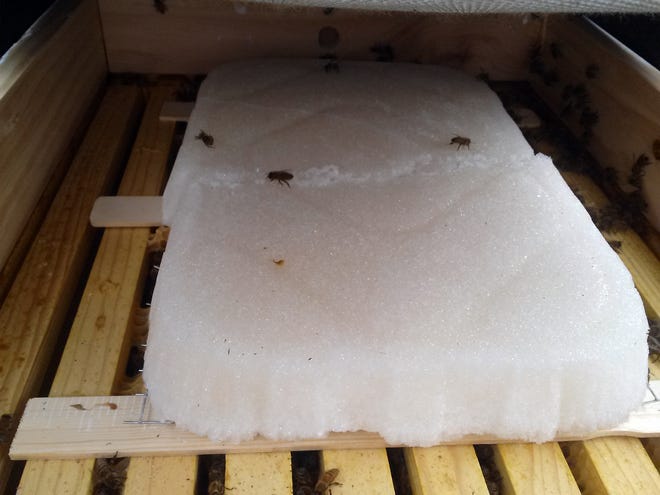
This peek inside a hive shows the sugar brick sitting on top of the frames so the bees have something to eat if their honey stores run low.
Gemma Tarlach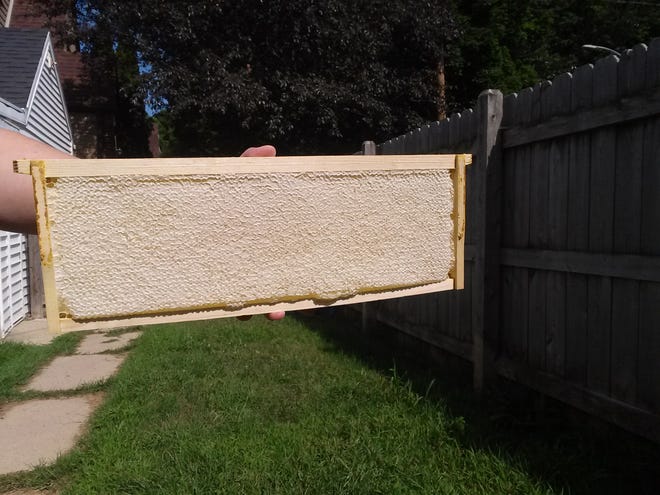
For the beekeeper, here's a perfect full frame of honey.
Gemma Tarlach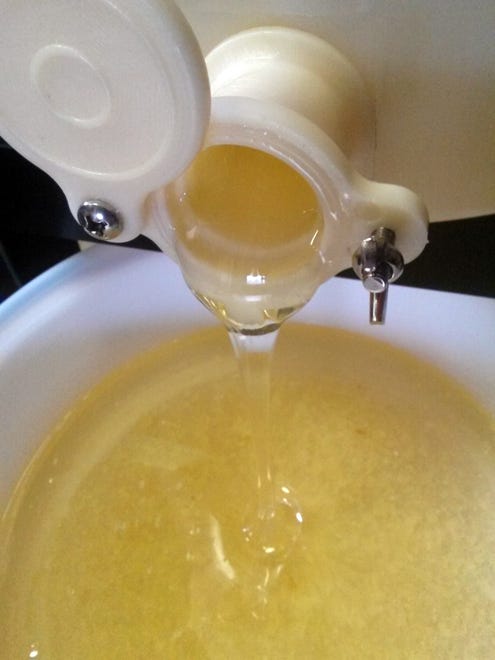
The beekeeper's reward: liquid, golden honey.
Gemma Tarlach